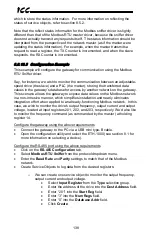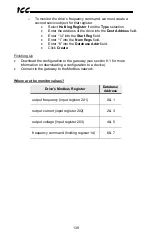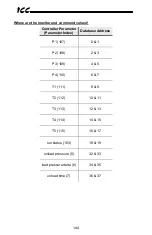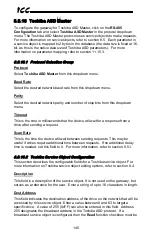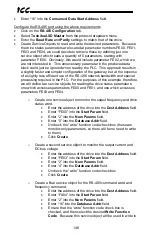
151
ICC
filesystem in the same manner as though they were traditional files stored on a
local or remote PC. While there are many different FTP applications available,
the following sections will provide general examples of using some of the most
commonly-available ones.
9.1
Initiating FTP via the Finder Tab
After discovering all gateways on the current subnet as described in section
select the target gateway and then click on the “Open FTP Interface” button.
This will open the computer’s default FTP application, which could be Windows
Explorer, a web browser, or a 3
rd
-party FTP program (whatever the
computer/operating system is configured for by default). This example will
assume that a web browser (Microsoft Internet Explorer) is configured as the
default FTP application.
An authentication dialog will appear (refer to Figure 11). Enter the currently-
configured user name and case-sensitive password (defaults are “root” and “icc”,
respectively), then click “Log On.”
Figure 11: FTP Authentication
The web browser will then display the filesystem’s contents (refer to Figure 12.)
FTP access via a web browser allows viewing and downloading files to a
computer, but does not allow advanced file manipulation such as cut, paste,
drag-and-drop, etc. For advanced file manipulation abilities, use of a different
FTP application is required.


